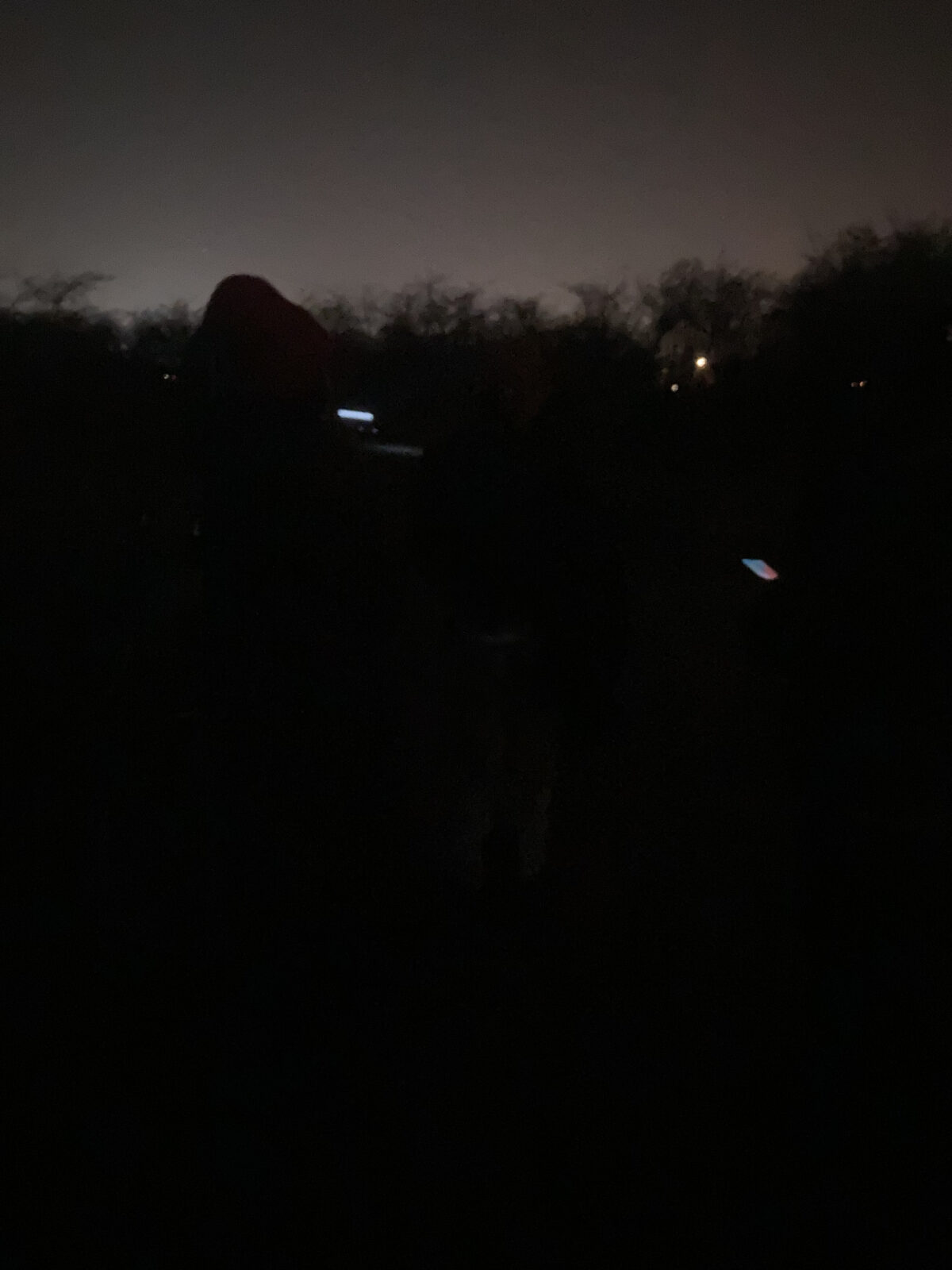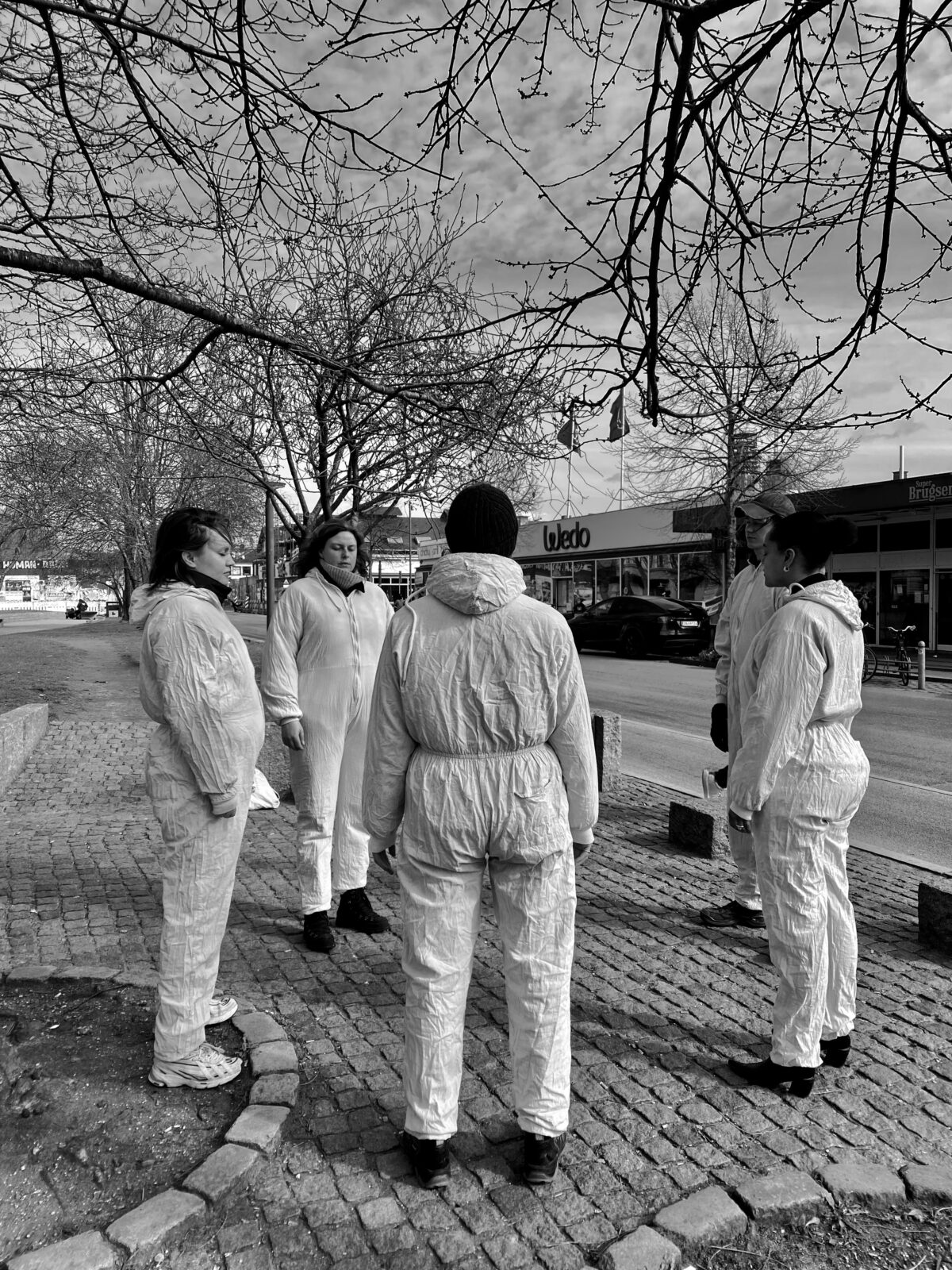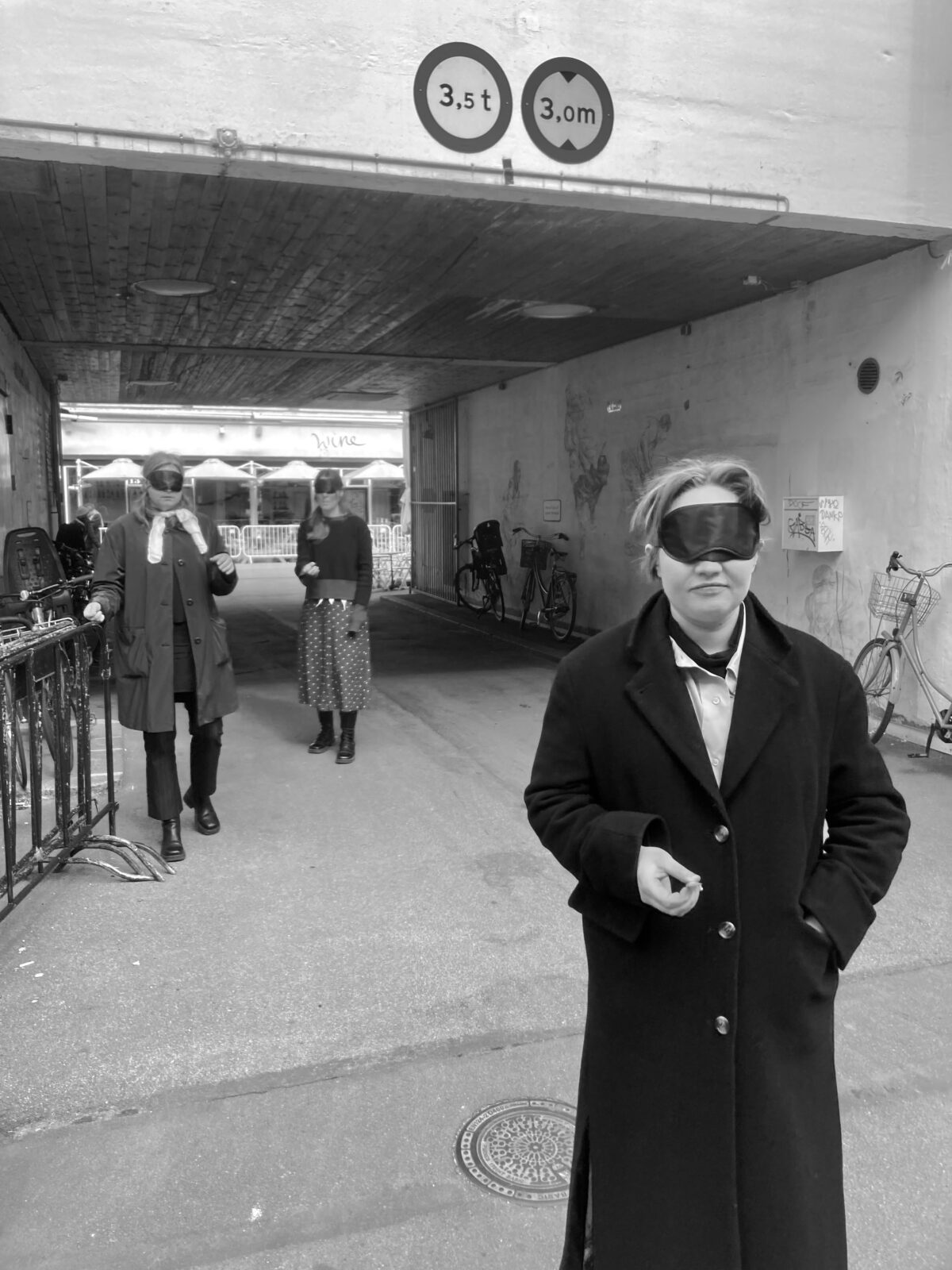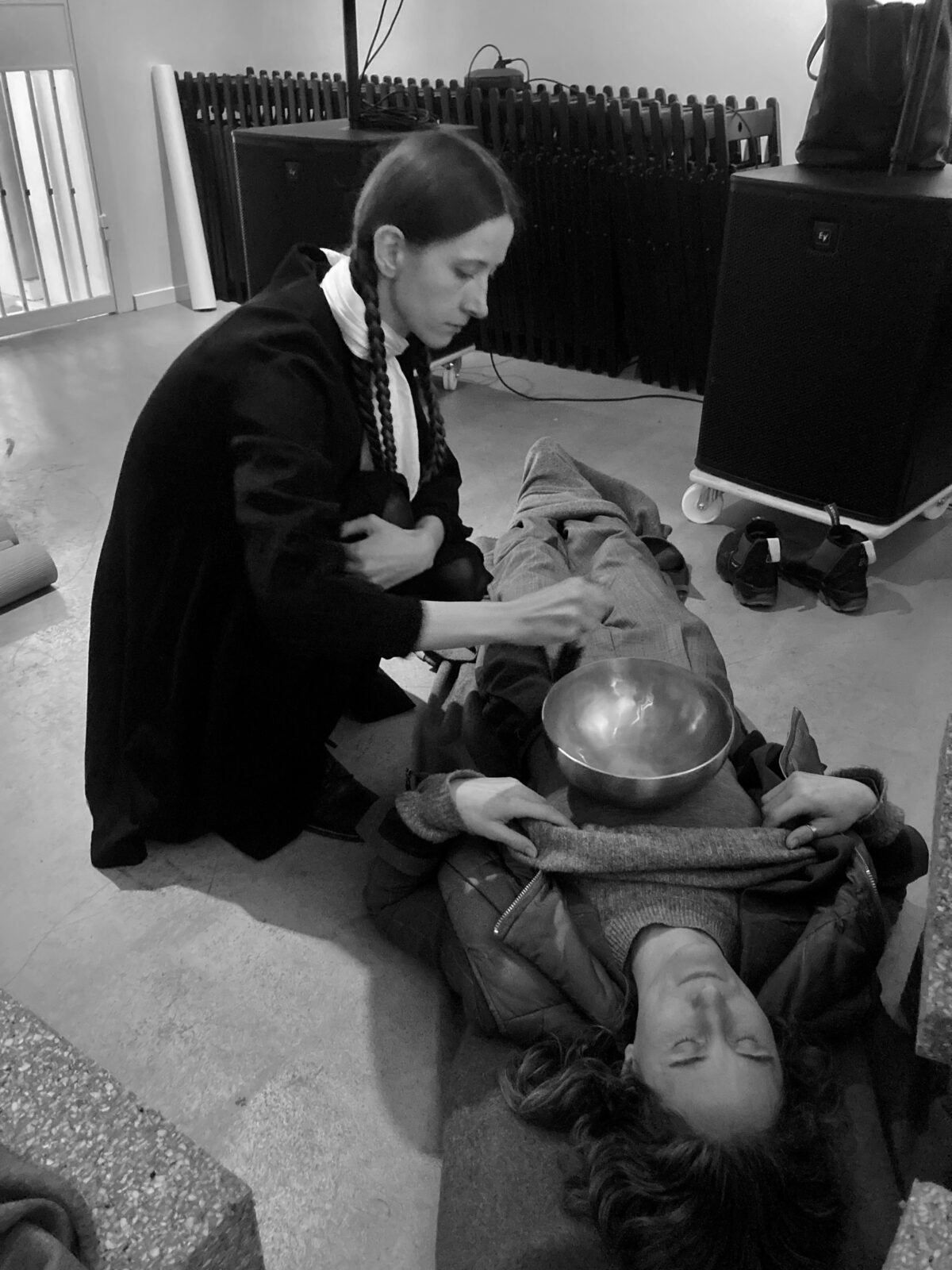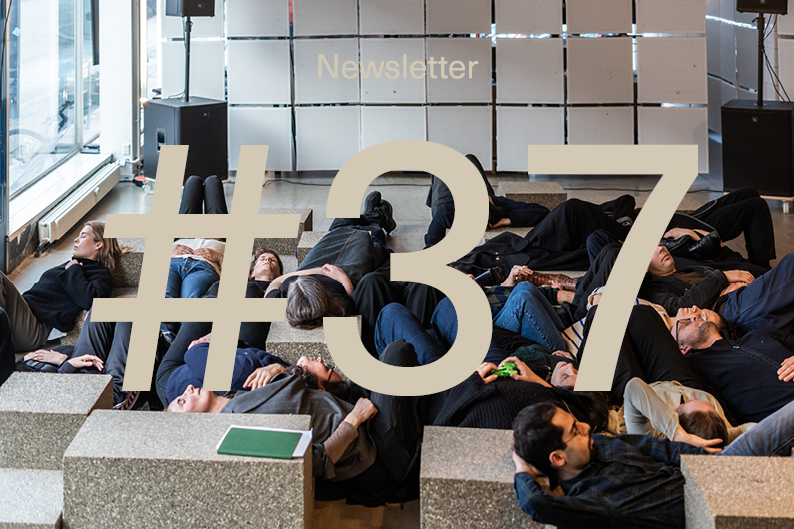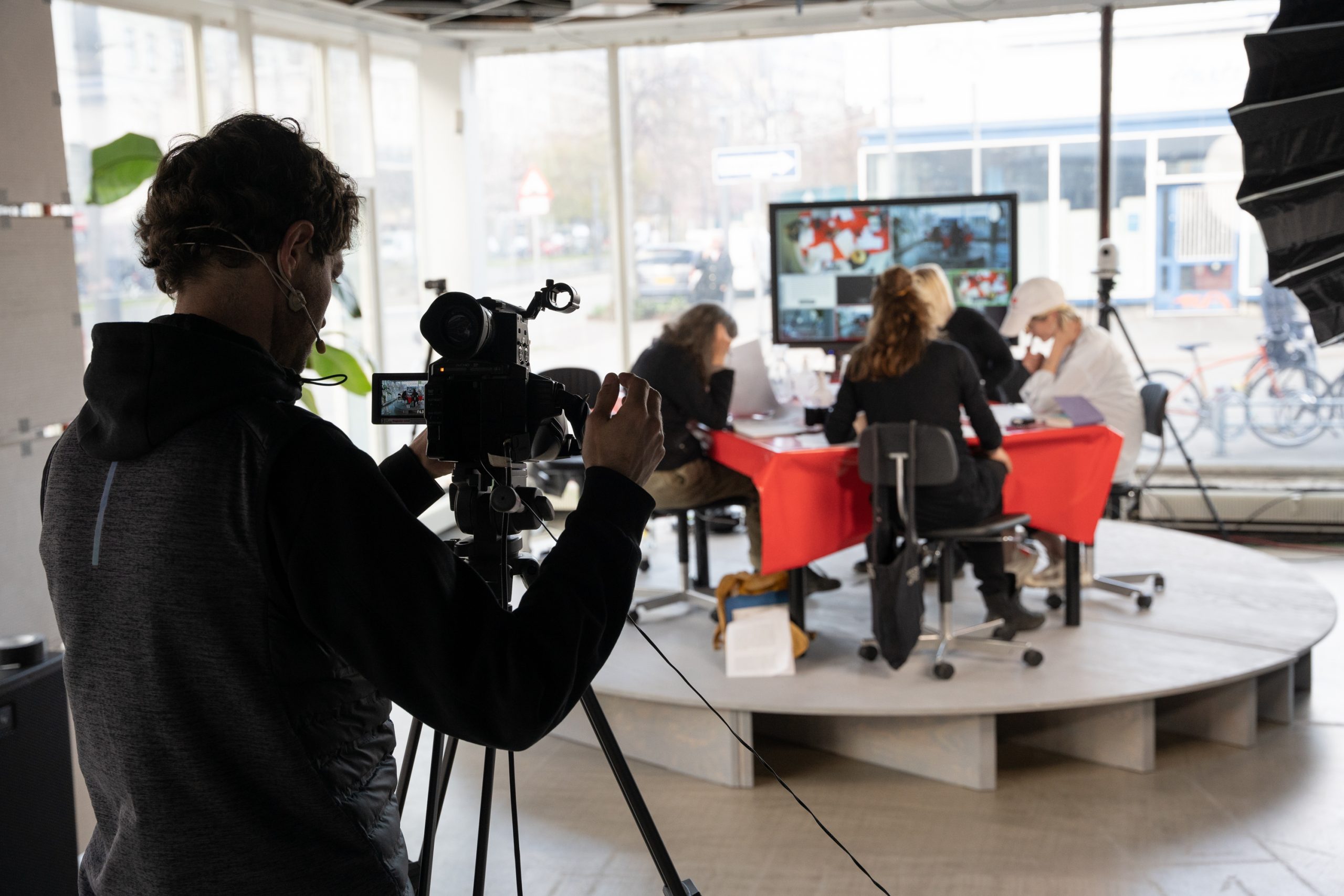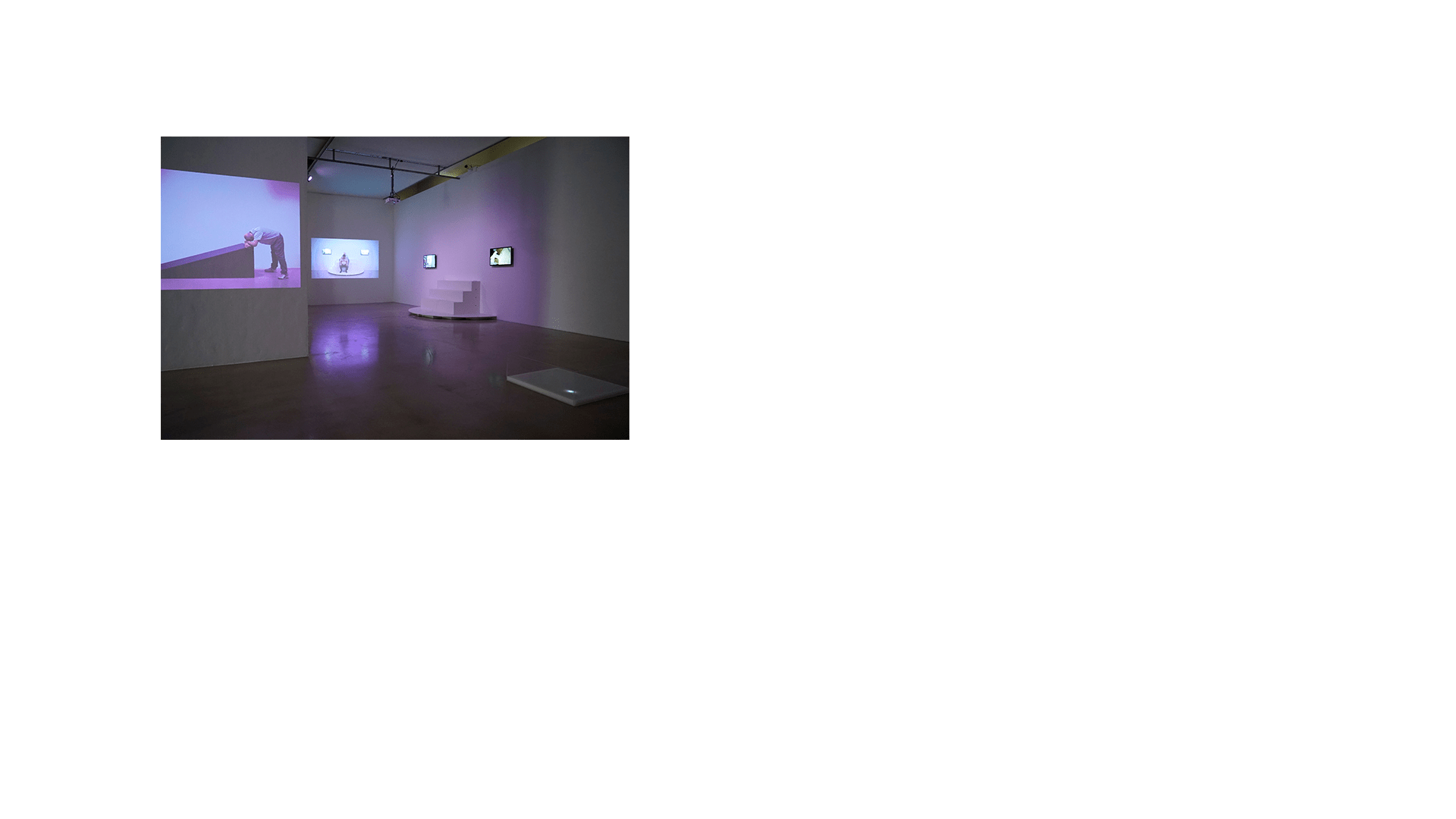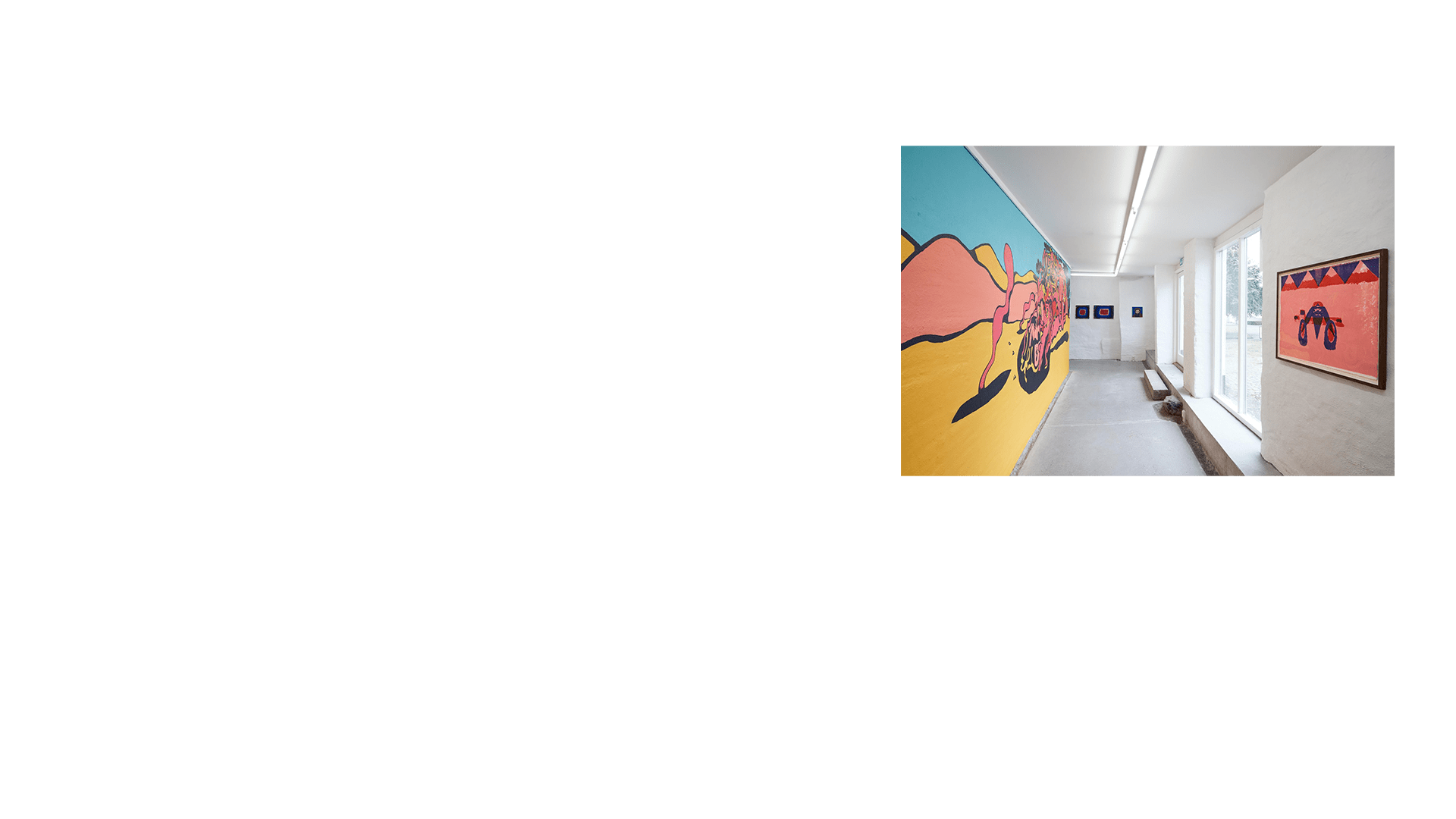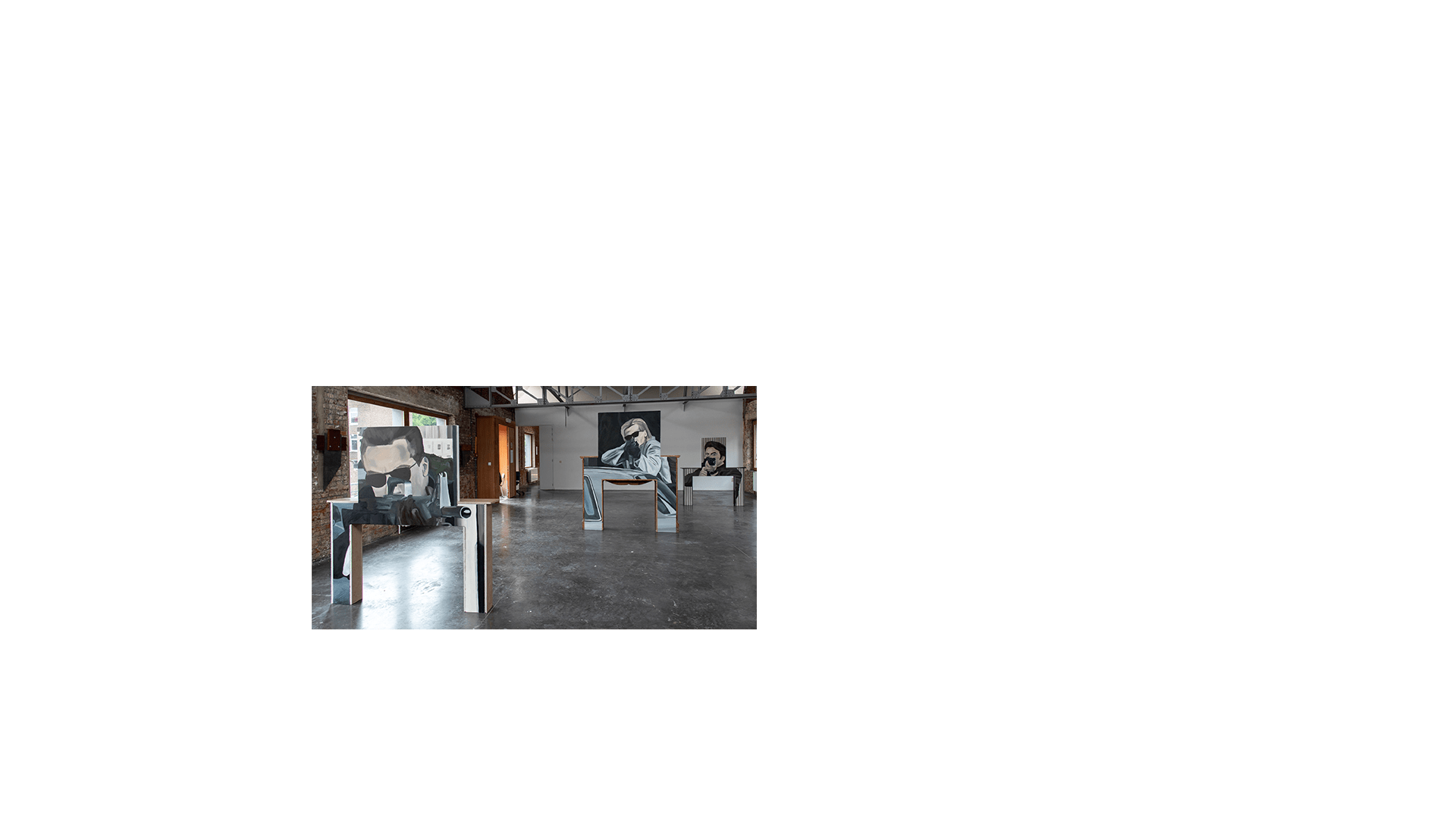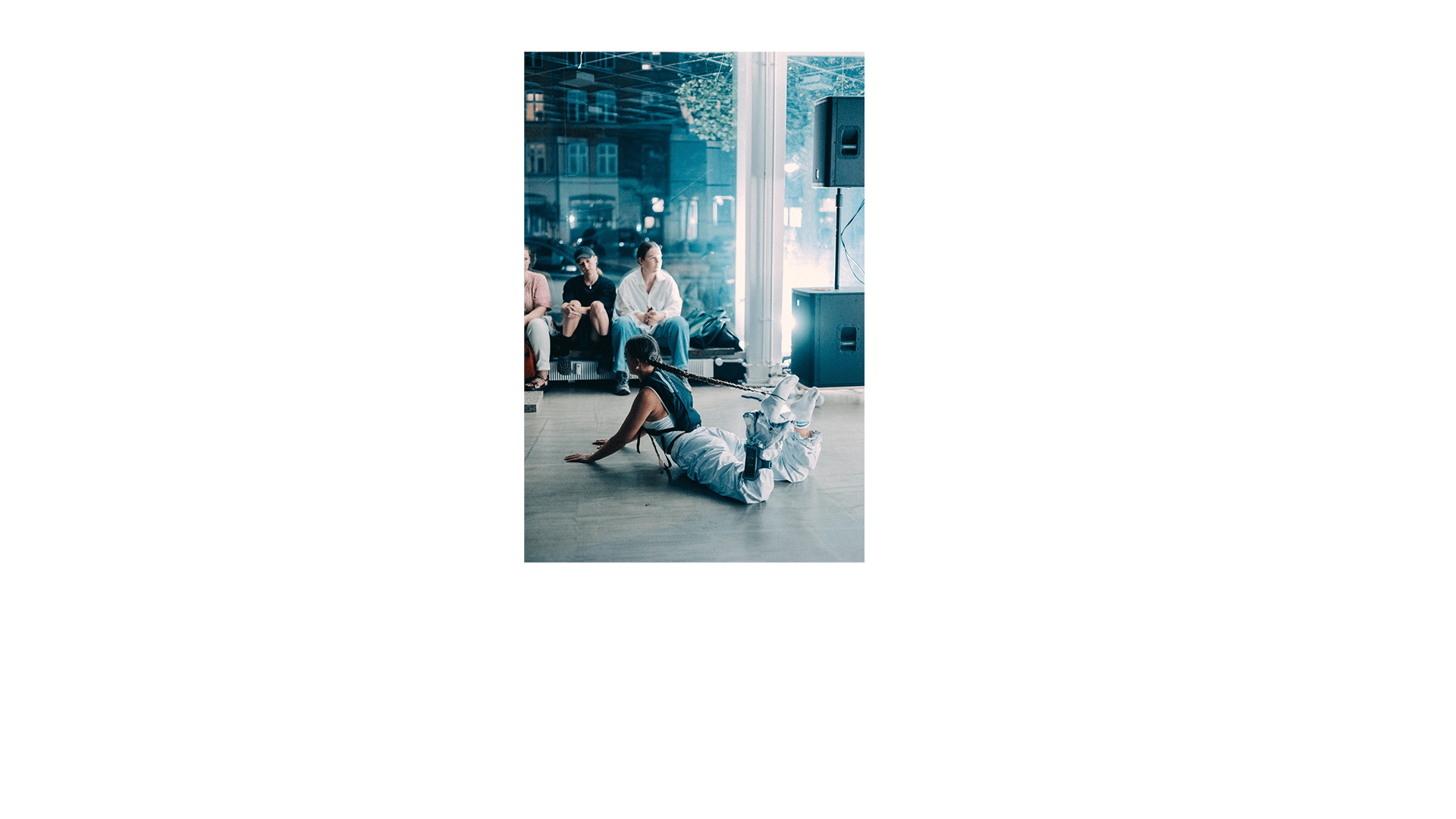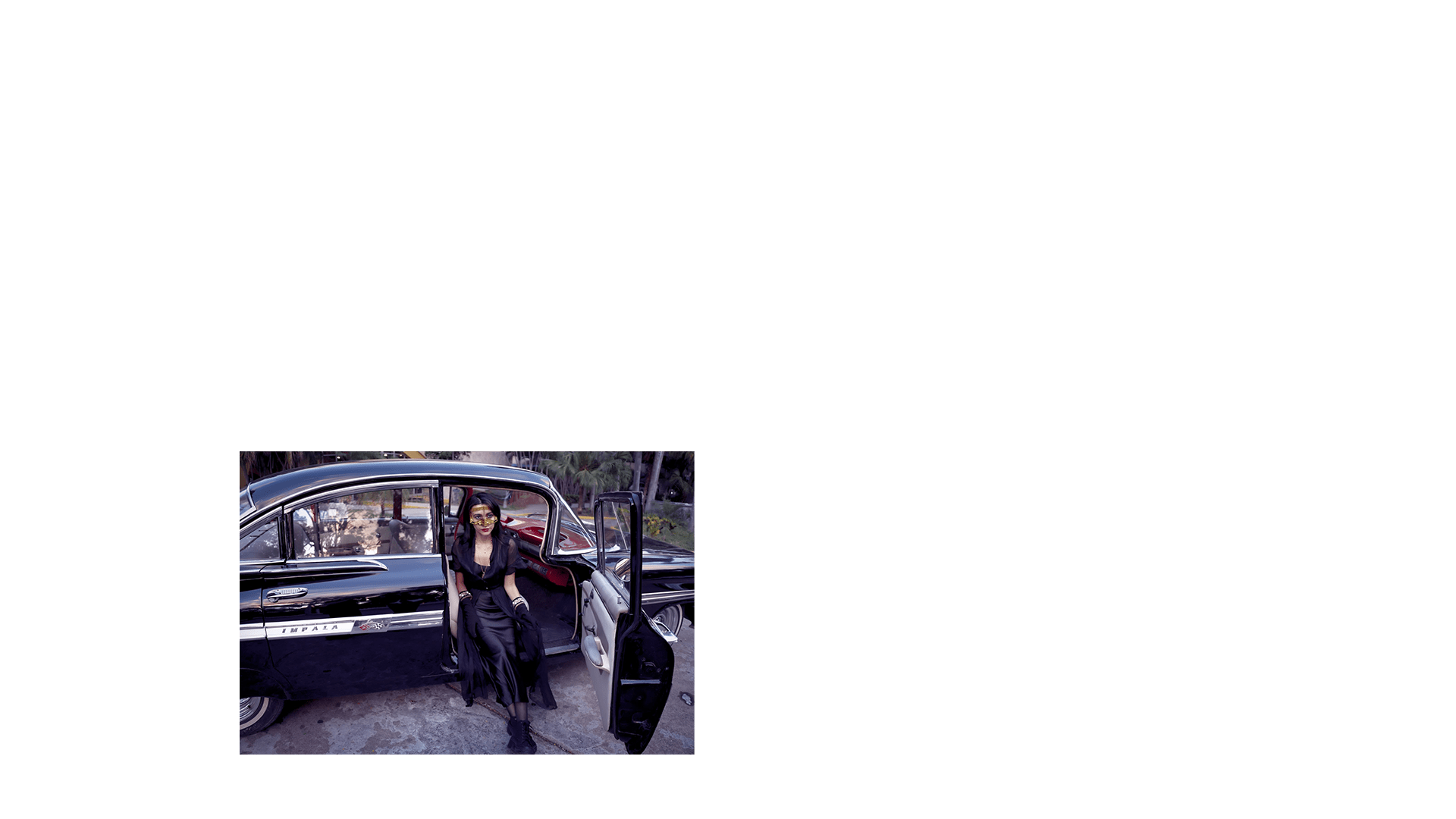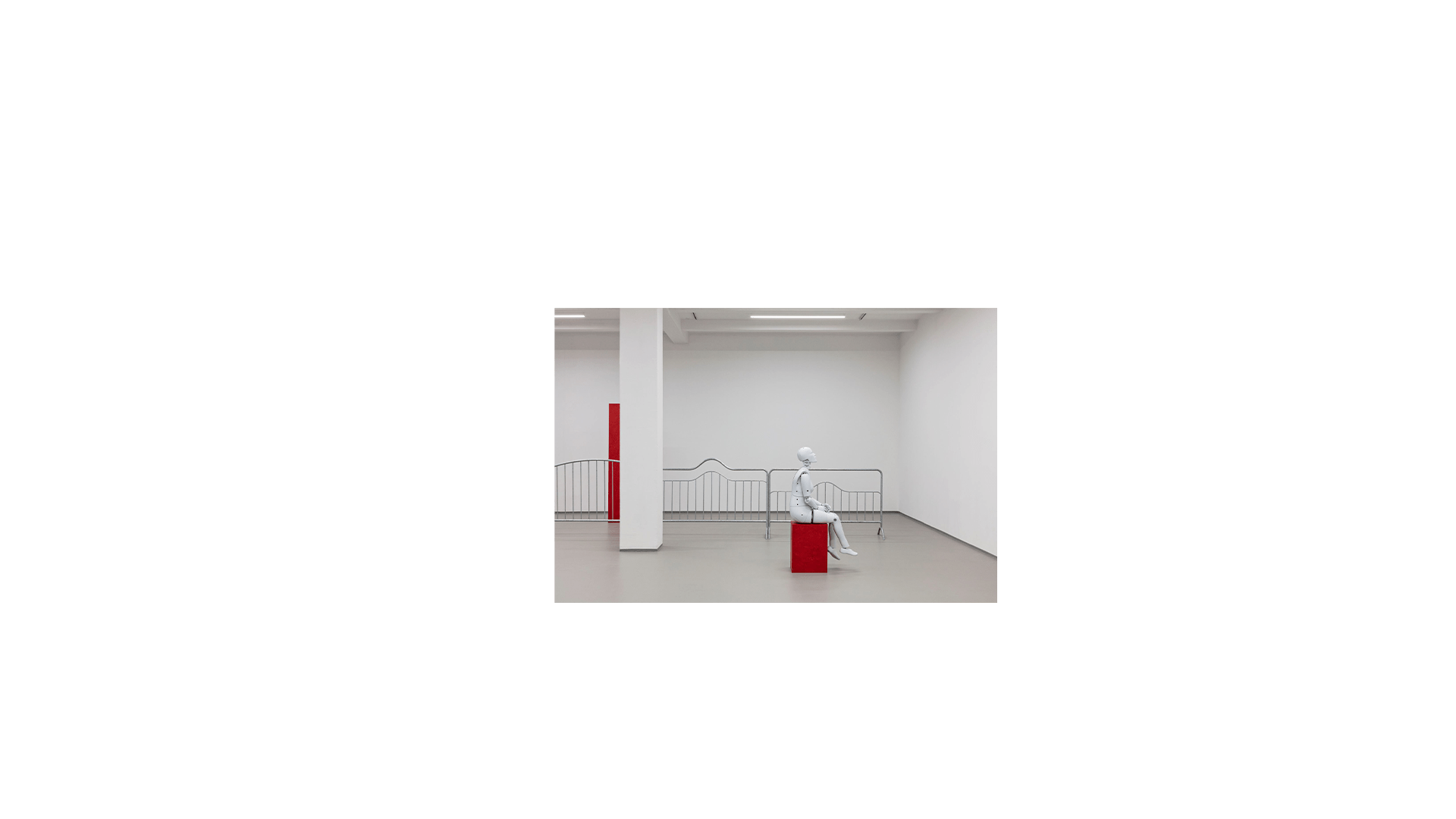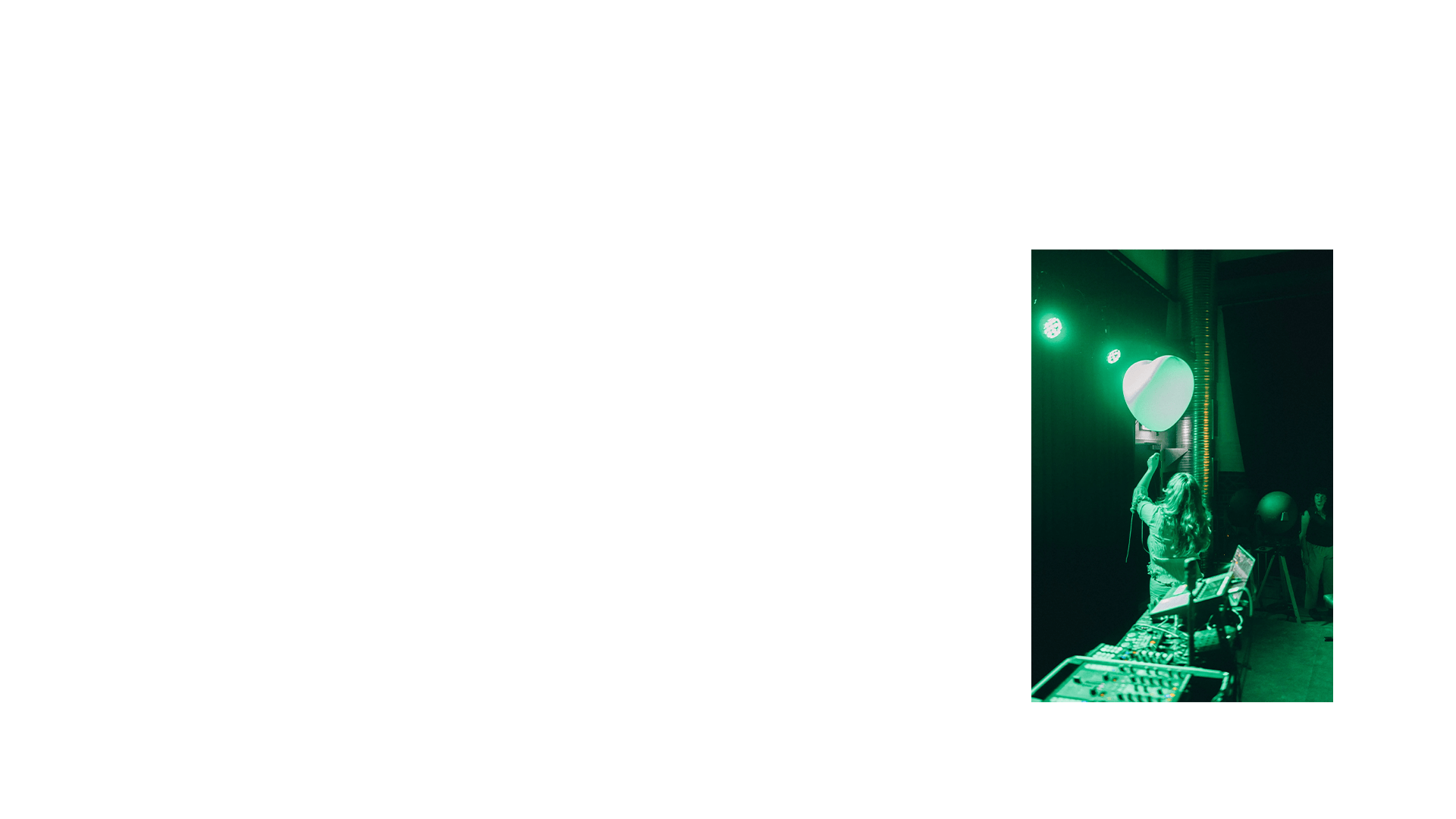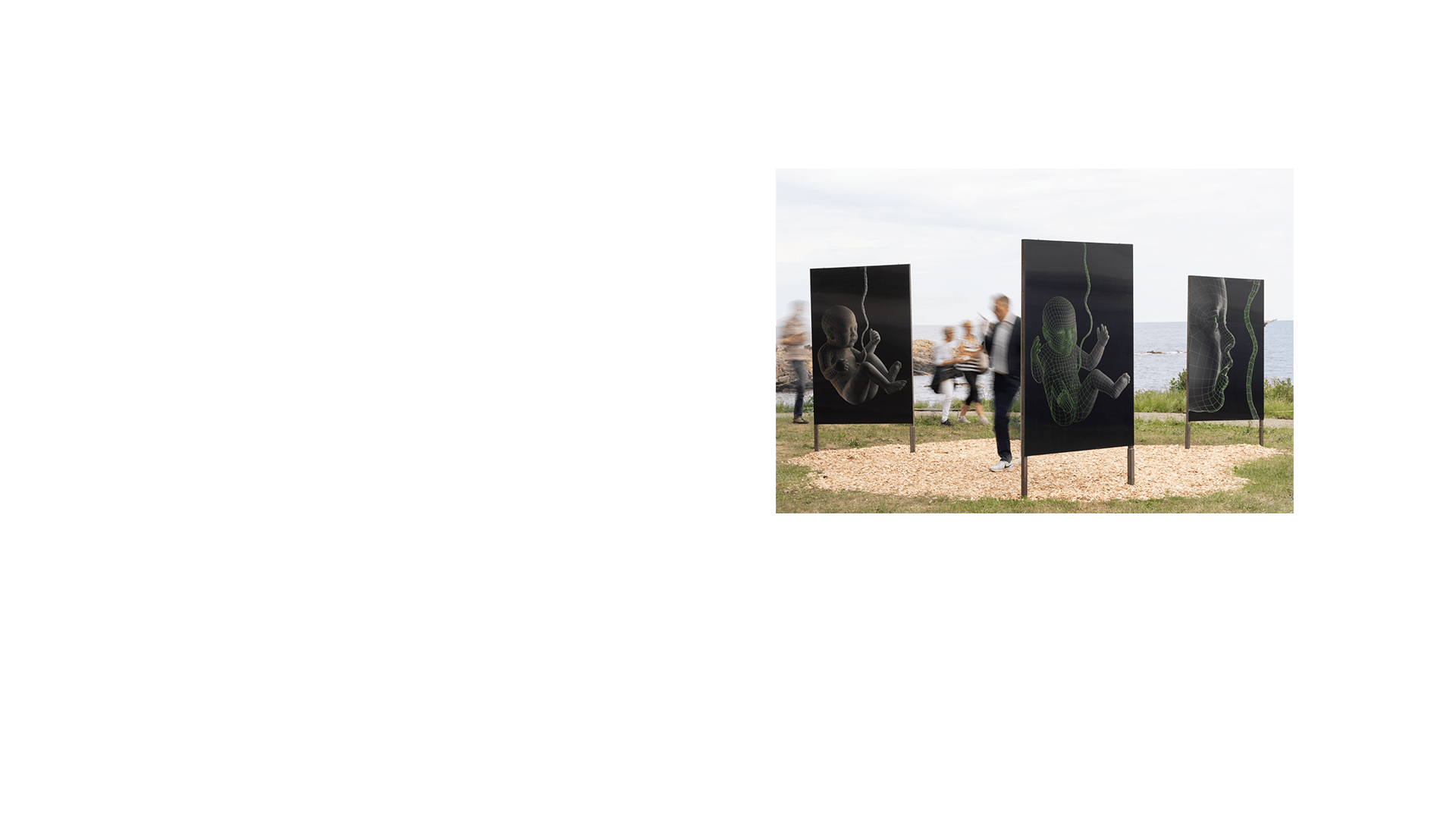Bureau for Listening : Fragments for Listening
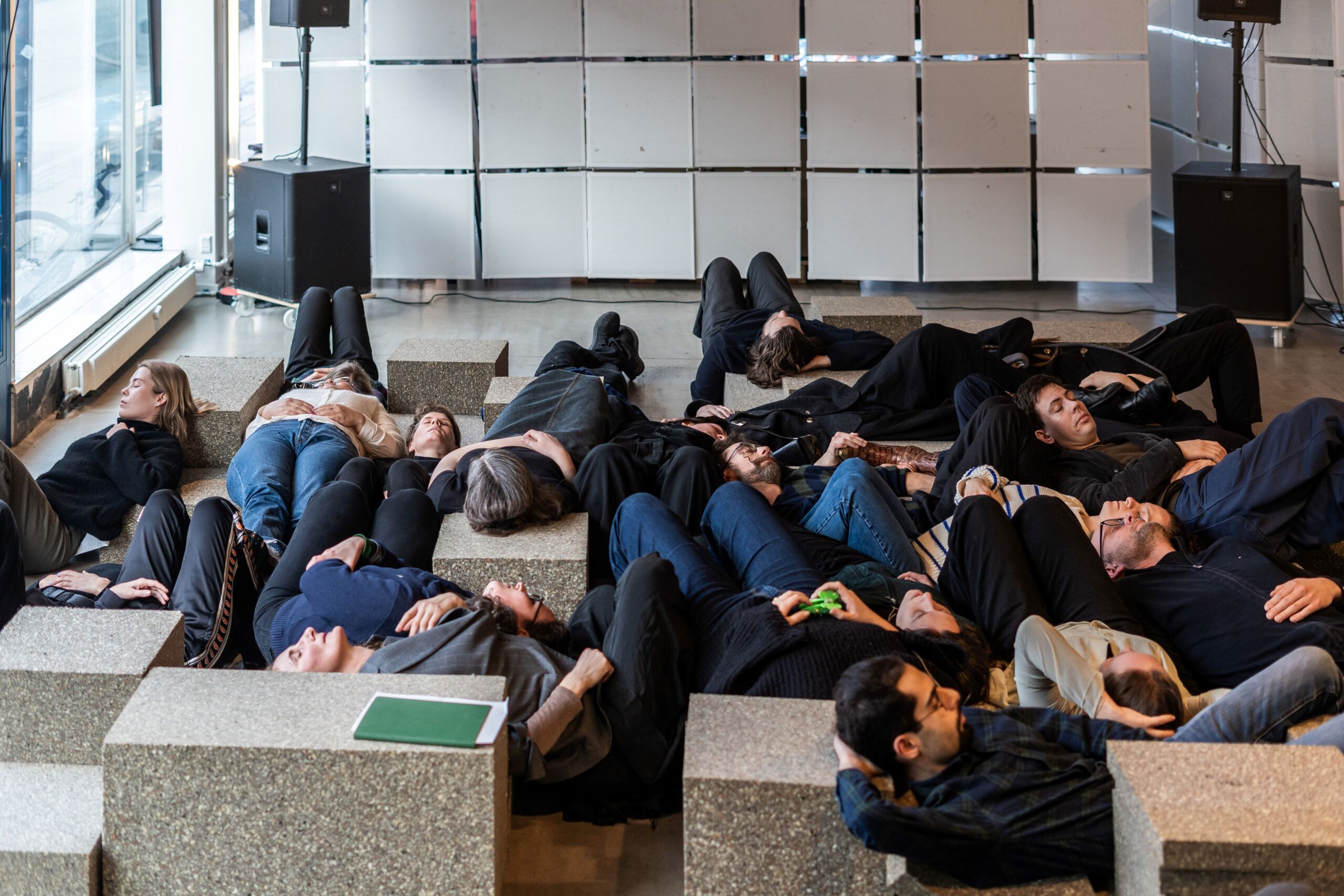
From Listening Event (I-IV) during Bureau for Listening’s Testing Ground at AHC, Spring 2024.
-
Name:
Elisabeth Holager Lund , Christine Hvidt , Nana Francisca Schottländer , Louise Vind Nielsen , Barbora Kováčová , Carolyn F. Strauss , Brandon LaBelle
-
Date:
-
Format:
Text
Introduction
Note for Testing Ground:
During our Testing Ground residency we have sought to explore and test listening as something that excitingly questions the familiar, assumed and known. We have over the course of 4 weeks, spread out over 4 months, dived into and responded to four themes/practices of listening; Listening as a Framework (January), Slow Listening (February), The Listening Body (March) and Spatial Listening (April). The experiments and program of the four weeks were set-up to both build upon and challenge the experiences from each other; offering a chance to (re)learn and stay continuingly within the process. Each week involved conversations, workshops and sharing of research with invited guests. At the end of each week we shared our process at a performative, poetic public gathering and Listening Event (I-IV). Listening was not a phenomenon sought to be defined during the residency, but rather one to be cared for, experienced, and its potential and power shared with the public. Exploring the testing of listening together with our invited guests was a key element during our four weeks of research, which is why we didn’t plan the week or the public events before actually meeting in Copenhagen. It was an important method to stay in the openness and pluralism of listening.
We would like to thank our generous, thoughtful and wise guests; Brandon LaBelle, Jenny Gräf Sheppard, Carolyn F. Strauss, Christine Hvidt, Nana Francisca Schottländer, Barbora Kováčová, Louise Vind Nielsen, Elisabeth Holager Lund.
Fragments for Listening:
From our expansive documentation of the Testing Ground residency, we have selected a series of ‘Fragments for Listening’; both to demonstrate certain formats and practices, but also to share possible poetic traces of listening. Rather than conclude, we hope these fragments will inspire and excite listening within an open and performative format, encouraging distribution and appropriation.
We would like to invite you to further discover and investigate our documentation here in our archive.
Fragment 1: Rituals
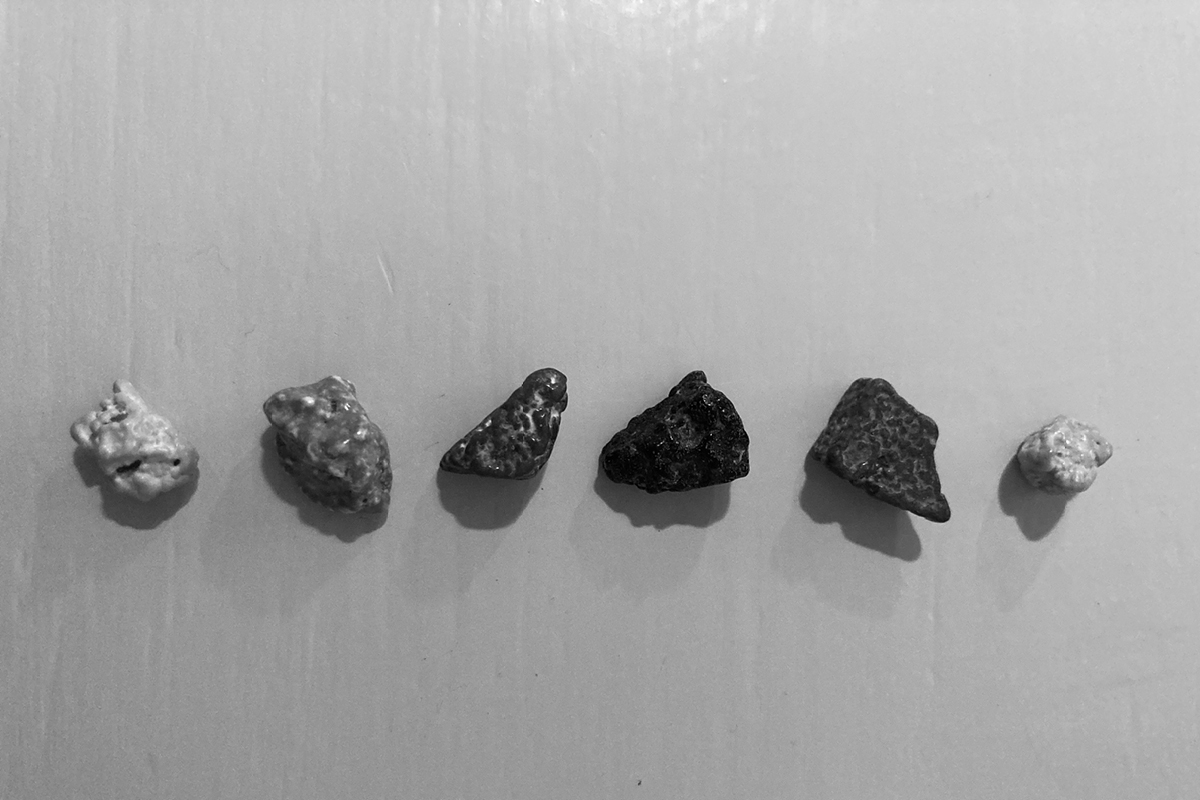
We turned to the rituals when we found ourselves in need of arriving in a space, of grounding our bodies, gathering as a group, or attune to the day.
Swallowing Intentions
- Find a space in the room you would like to inhabit for the next 15 minutes.
- Listen to the voice reading Being taken for Granite by Ursula K. Le Guin.
- Listen to the second reading of the same text by the same voice.
- When the reading stops, gather around the table at the center of the room.
- Find two (chocolate)pebbles on the table.
- On the first pebble, place an intention you would like to take with you into the day. Eat the pebble, you will now hold this intention in your body for the rest of the day.
- On the second pebble, place an intention for the group for the day. Offer this pebble to someone else from the group to hold.
- Swallow any intention you might have been trusted with, hold it in your body.
- Start the day.
Slow Reading: A Collective X (fifth) Story (for 2 or more people)
Take a pen and paper.
Sit in silence for 7 minutes and write your own text. You can decide on a common topic to write about or write about what comes to your mind at this moment.
For the next 7 minutes, read your story out loud and slowly. Everyone reads out loud at the same time and slowly, so your words intertwine with each other. If you finish your story, repeat it.
You can record the reading and listen to it afterwards to hear a collective new story that you have created from the slowness and your own stories.
Influential Spatial Listening
To be performed in a public space (the space might be considered private for some individuals).
To be performed by one or more performers (the actual number of performers might be held secret).
To be performed within a classified duration only known to the performers (usually from 15 minutes to influence enacted).
Phase I
Name/describe/define which element in this pace confronts and/or disrupts and/or limits and/or provokes you the most.
Phase II
Without knowing the element, start listening to the element. Cast your secret attention on and around it; spy and observe.
Start to surround it with all of your listening; cover all directions that the element might use to escape and transform (check also for invisible/inaudible possibilities).
Decipher how/if the element is communicating and/or relating to other elements in the space. Does it have allies? Map all points of contact.
When ready, start to affect and transform the element through your listening. Influence it secretly.
Phase III
Without anyone noticing, start to move around the element to the best of your ability. Observe and listen to it from different directions.
The element must not discover you. You must stay stealthy (note: usually the best stealth comes through involvement, with double-agent acts and/or slow trace-making).
You may make use of different none-like-you sounds (knocking on walls, stamping on the ground, throwing things, bird calls etc. as distractions or covering of your tracks).
Continue your secret affecting and influencing campaign until the element in question surrenders (changes to your wishes), or it no longer confronts/disrupts/limits/provokes you). You may make tactile withdrawals and return under other more favorable circumstances.
Spatial Inhabitation
Part I (5 min.)
- Write a list of barriers. Any sort of border or edge that serves to define a type of space.
- Read aloud.
Part II (10 min.)
- Find a space you like.
- Inhabit it.
- Define it. Separate it from what’s around it. Define its edged.
- Write a four-step guide on how to settle in to this space.
- Leave the space.
- Invite someone to inhabit your space by giving them your guide.
Fragment 2: Conversations
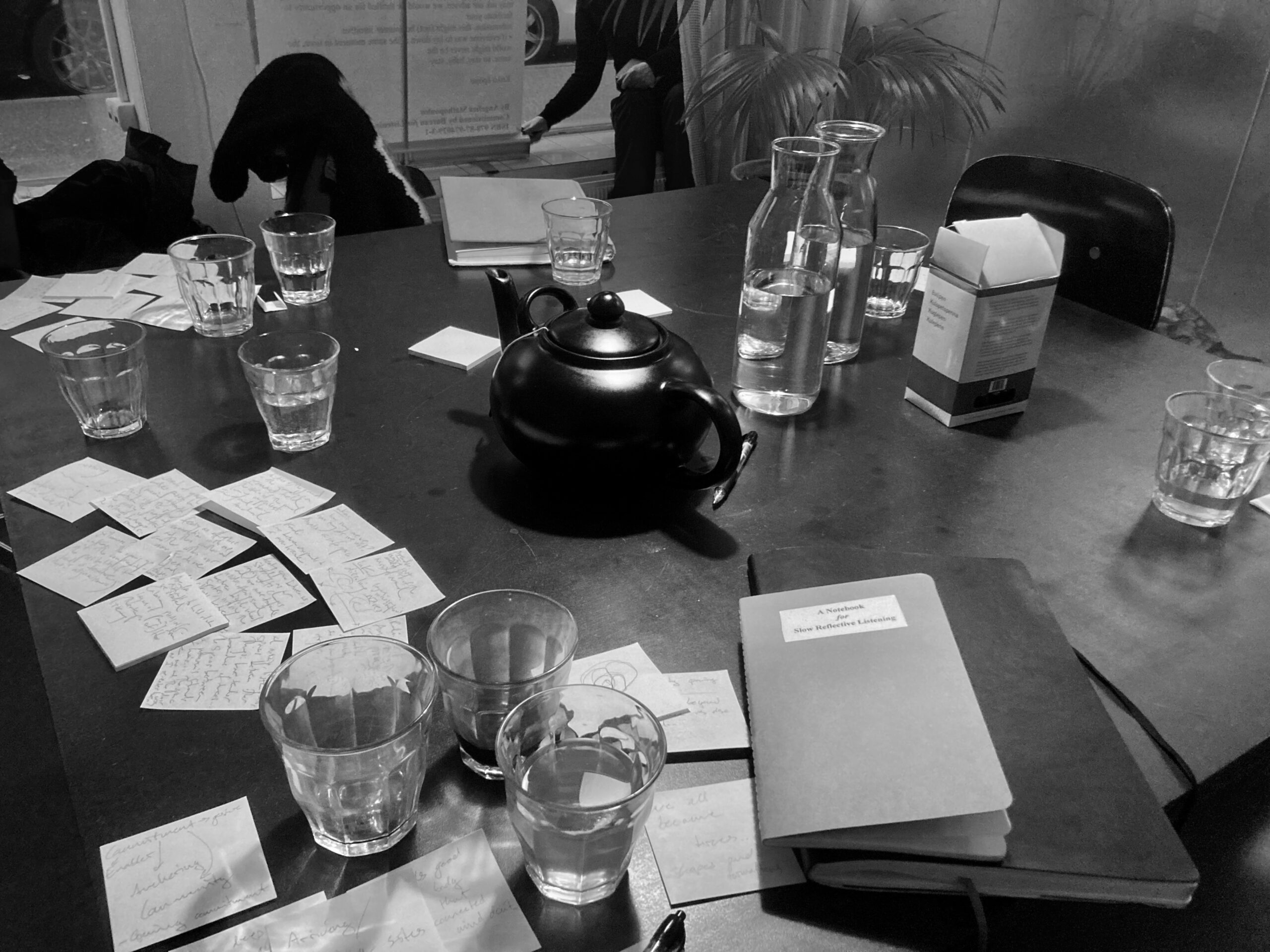
Fragmented Group Conversations for Listening
For each week/theme of the testing ground we facilitated an open group conversation with our invited guests. The following is four condensed and fragmented versions of the conversations; leaving out the individual voice, and instead nurturing a series of unclearly connected words, concepts, responses and questions – and thereby creating a new context and output.
Wednesday the 24th of January
The vault at Art Hub Copenhagen
Original time: 1 hour and 24 minutes.
Present: Jenny Gräf Sheppard, Brandon Labelle, Randi Lindholm Hansen, Lukas Quist Lund.
[…] an excuse to start a conversation, open a dialogue […] to set it up as a generative situation […] Listening as what sets the conditions […] My mother was a very good listener, my father wasn’t […] people wouldn’t listen when I spoke as if I wasn’t being heard. […] I think about listening as very multisensory […] receiving a touch, those things are also part of sounding and listening at the same time […] when I come to a framwork, I guess it’s hard for me to separate the listening from the sounding […] the situated-ness of listening […] we could say that there is always already a framework in place […] becoming aware […] and so bringing a sensitivity and reflection to that situated-ness and how that impacts our listening […] what is theory […] that allows you to hold what is hot […] allows you to hold it and to give it a frame […] so we can kind of understand it or explore it or dwell upon it […] so maybe this framework can also be on that more abstract level […] too delicate to touch […] a holder of ideas […] the theory then genders the contents […] cultural context of how we come to our listening position […] certain belief systems will create the capacity for listening […] yeah I’m just thinking about linearity and what causes what […] what is hot and difficult […] the framework is not the idea itself, it’s how we are doing it, it’s from somewhere always on the move to somewhere else, always transforming, shifting, adapting […] alive and moving […] generate more or generate back […] the institution as a framework […] inciting movement […] continuity about the institution as a framework […] It sort of holds something, community or content or even an ideology […] And that’s kind of part of it’s project; enduring and allowing for this reference point over time […] to stay attuned to its community […] and also the importance of staying fixed […] fought for and tested and negotiated […] this tension between the fixed-ness and what is challenging that fixity […] great complexity between that which is fixed and that which is moving […] we can’t notice slow change […] listening to one’s own situated-ness […] listening as a speculative act […] featured within large moments […] listening as a condition […] this process as a performativity […] taking it into ourselves and moving it somewhere else […] shifting orientation […] what I was taught was the pushing back, not the listening […] maybe there was another class […] going back to stasis and movement […] nested frameworks […] how movement and framework is always part of the same thing […] thrive in and feel supported by […] at least not dualistic […] we imagine the Bureau for Listening as a framework […] we imagine some fixation, some comfort […] a suggestion of space, physical framework […] it’s kind of a grasping for something to hold us […] the performative act of naming something is also giving a framework […] bureau for versus bureau of […] a way of framing or orienting […] we say for, but they just hear of […] the bridge between the two concepts […] we really allowed it time to form and to not take anything for granted […] invites so many other ways of inhabiting […] we are kind of longing for it and grasping, but we are also constantly questioning it […] the generative […] in a way speculation […] the gesture of naming […] listening becomes endlessly redefined […] hanging on to the speculative, investigative not-yet-ness […] in process-ness […] somebody has to be there in the beginning in order for there to be a party […] the time-based-ness of it […] just how the two ears are hearing […] maybe there’s an uncertainty there too […] I love this thinking around doubt […] discovering in the moment what is there […] the dynamics of listening is in itself a changing thing […] a lot of confusion and a lot of certainty and a lot of in-between […] but what you have as a frame is listening […] clarity is always different […] there is always only starting […] we can appreciate how listening keeps us in the middle […] what is always already there […] if we doubt, we also question […] who are we to judge the process […]
Tuesday the 27th of February
A meeting room at Art Hub Copenhagen
Original time length: 1 hour and 30 minutes.
Present: Carolyn F. Strauss, Amalie Sejersdahl, Randi Lindholm Hansen, Lukas Quist Lund.
[…] receptivity […] the way we move between different disciplinary practices, different scales across different spaces or geographies […] it’s not only listening […] practicing slowness; listening in the moment very intimately but also being aware of a larger ecology of listening […] simultaneously […] listening to the unfurling of a tiny leaf […] to the movement of the sun and the sand and the sea on the coast […] a completely unknown […] insisting […] how we understand our symbiotic relations […] landscapes of listening […] zooming out […] I don’t know if it’s listening to friction […] intertwined and not knowing […] sensing, subtlety, awareness, tuning in, deep listening […] humility, being humble, nuance, judgment and non-judgement, vessel, womb, fertility, or fertile ground […] silencing our hyperactive egos […] honesty with the real requires a willingness to listen […] not only hearing what the other has to say but becoming sensitive to how someone else is […] we listen down to a deeper level that already knows a little more than we do […] a different way of listening is needed for practicing profound contemplation, silencing our hyperactive egos and letting go of control and work […] as a human being who is very much within my human skills, how do I listen to the non-human skills or the non-conform skills or perhaps even the unknown skills? […] when do I become aware of how my cells are responding to the dust of the stars? […] a processional supporting relationship that we can attend to […] a space of potentiality that allows things to happen that normally wouldn’t happen […] listening has this element of friction […] paying attention […] cross lines […] necessarily in the listener or in the recipient […] compassion is a form of judgment […] we live in so short time and things take a lot of time also to pass into our DNA, into our histories, into our traces that we leave behind […] give ourselves patience […] to witness […] not knowing […] the Japanese concept of ma […] this the pregnant void […] insisting on practicing an awareness of all that one doesn’t know in any situation […] who holds the creation of that pregnant moment? […] it’s a very large entity of many different agents making this a prudent moment […] listening is a practice of attention […] maybe there is a difference between attention and awareness […] are you paying attention to the unknown? […] energized space […] practices attention because something will emerge, that there’s always new energy to be unleashed or to be discovered, there’s always this latent potential […] slowness is attention to process […] maybe it should be slowness is awareness of process […] slowness is always in process […] I can never really answer […] how does that alter? How does that challenge? How does that open up? […] what kind of awareness, what kind of process […] is the process itself also changing? […] there’s endless possibilities for what is experienced through the process of performing […] slowness as awareness of process, but I really wanted to change that to slowness as awareness in process […] the awareness itself was also being altered, changing, challenged, that there was like this unsureness of how do we keep doing it […] interactive […] I’m learning and discovering […] if you walk slowly […] then something […] starts […] you create a space where you can get into some kind of slowness […] that’s the big question […] beauty of that question is that, that perhaps all situations in time and space holds the possibility […] it’s not necessarily your choice but it’s also your choice […] it is this constant and more, both this but also more […] a manual for slowness […] discovering something […] awful slowness […] slowness is also a question of trusting the process […] the awareness of the process, or attention to the process […] sharing thoughts and experiences of moving toward a horizon of slowness that we will never reach […] slowness is like a passing through something […] it’s not that there should not be a horizon, but you never reach that horizon […] moments of returning to friction […] this whole testing ground residency is […] an attention to the process without a predetermined end point or end goal […] just imagining it, caring for it, searching around it […] it’s an entity almost that has a presence in the process of listening […] on my heart is always to insist on what is already always there […] this very pregnant world that we’re living in […] different ways of becoming aware and staying with that what is already there and its many different layers and skills […] simple attention towards our awareness of what is already there and how much I don’t know what is already here […] it’s just this little tiny, gentle gesture of pointing towards listening, slowness, and boom […] the world is exploding in complexity and beauty.
Wednesday the 20th of Marts
The vault at Art Hub Copenhagen
Original time length: 55 minutes.
Present: Nana Francisca Schottländer, Barbora Kováčová, Amalie Sejersdahl, Randi Lindholm Hansen, Lukas Quist Lund.
[…] it’s there. It’s not by sound. It’s not by visuals. It’s something in a place which reveals to you immediately all these memories, but you don’t know what it is. You cannot grasp it. […] resonance for me is not necessarily a concept of sound but more of like how I guess the ambience or the beingness of something resonates into my system. […] And I use my own body as the tool […] I’ve always been really passionate about rocks. They are very, very wise, resonant beings. […] Is it communication with objects and actually the object, or is it communication through the object with yourself? […] there is something about the nature of questions that allows one to stay at the very borderline or the edge of one recognized world. […] what tools do we have to stay in that kind of open, receiving space […] So how can we perhaps listen more to the questions of the body as a way to keep that active, challenging and more expanded? […] nowadays we are actually forbidding the body to speak and closing up and being way more aware of social situation and do not listen in the bodies […] But is openness a necessity for the listening body? […] I think the body can always be listening, it’s just listening from different positions, and I think like the clenched body, by not acknowledging the clenched body, then maybe it’s hard to be listening from that position but by acknowledging this is a clenched body what does the world sound like from here then even within that situation there is an openness to listening to that. […] how do we let go of idolized listening ways where stress is not welcomed like why is the discomfort not part of our idea of listening […] like there’s no space for it at all there’s no rest for it and there’s no holding the space with and for the stress it’s just left out in the wild in some way. So my question is really like, how can we both invite ourselves to open up listening to be better at caring for the stress? […] us as the agents, and all the other agents, but also the world that we are being within, are both struggling with the discomfort. […] curiously exploring discomfort is also a really active way of dissolving it, or at least dissolving the immediate notion of it as this is discomfort. […] awkwardness is the new black. […] But I wonder if the discomfort only exists in the unwelcoming nature of a situation because as soon as you let it in or you give in to whatever emotion or mode your body holds then you’re allowed to be comfortable in it and then the discomfort dissolves. […] there’s like a tagline in surrendering to being a body rather than the idea of a body or a narrative for the body, then just surrendering to be that body that you are. […] But I think we still have to recognize how much pain and struggle that also lies in surrendering to being that body like a body is not necessarily a nice place to be like some bodies is probably super nice happy bodies other bodies are super stressed or that carried traumas or they live in a world that doesn’t want them to be alive or whatever so I think in that terms of like surrendering to being a body for many bodies is also perhaps too much it’s equal stuff or it’s comes with struggles that is not for themselves to carry […] a collective problem in a way that our bodies are just in this system so if you take the whole system on your own body it can also be a lot and maybe too much for one body to feel like it has to carry it […] I think that’s an interesting idea of the body as a tool and in a way it might carry some negative connotations […] I found it a little bit comforting also. As a mechanism or something that I can use […] it’s a living, it’s a living, a living instrument and I really like the idea of the body as a finely tuned instrument. […] it just seems that the body is such a powerful learning situation in terms of listening […] sometimes we instrumentalize our listening, we instrumentalize our bodies, we instrumentalize situations, saying it has to be this, it has to provide that, it has to yield this and this.[…] staying with this yeah curiosity or unknowing and validation of that which is rather than what should be […] And it offers so much space for movement, for mistakes […] And listening can do that, like hack the situation, infiltrate the situation, infiltrate all the other factories of instruments that produce all these things that we already know what is. And Disney hacks that. We claim the instrumentalization back. […] the burning question I’m left with now is that of is; my capitalist body during ok […]
Wednesday the 17th of April
The vault at Art Hub Copenhagen
1 hour and 7 minutes.
Present: Louise Vind Nielsen, Elisabeth Holager Lund, Amalie Sejersdahl, Randi Lindholm Hansen, Lukas Quist Lund.
[…] but conversation, we can definitely […] I only heard fragments, but there was a path […] the doubt of the spaces […] and I don’t know why […] space is never given to me […] when you paint black, it means that it does not exist. In such a scenographic sense […] is it because we do not want to be seen? Is it because we disappear? […] in architecture, one must constantly relate to a context. It’s a big part of the art […] conversation space in the bank vault room […] so they could visually see each other. So this campfire can indeed warm our backs. And still have a conversation […] the effect of the campfire in a conversation […] how does this change the space for you, that it is being recorded? And in what way can one perhaps take that into account? Caring about it? […] I think that it is precisely not a negative motherly love […] for we have been sitting and talking all morning, which just as well could have been recorded. Like this conversation […] yes, maybe it should have been recorded, and not this one […] a part of the recording, to disturb and complicate all things […] it should not be said aloud. It does not become a ritual moment, that one should press a button […] and then after the break say… Now we make aware that we are starting an audio recording […] recording the shift […] invisibility gives a freedom […] what happens in such a society, where all people become blind? […] sound as being this ghost. Yes, that goes in and changes the energy in a room. […] will there be a decay with the ghost in the invisible? Or will there be a rise of morality, because one becomes more insecure, more vulnerable? […] and moreover, we are being watched […] what pressure, expectation, possibility space is there then in what one says from here […] what do I say? And what do you say? And has it now been in and edited some of it […] to be held accountable for one’s words or one’s additions or contributions […] it fragments the conversation […] focus is shifted […] is it just raw text without people? Is it like the real people saying the right things? Is there a lot of space, little space? […] I have never ever seen a transcription, where it says, with what feeling something is said, or is there noise in the background, how far is the person sitting from the microphone? […] and I laughed right then. Such things, they are sometimes written into a transcription […] it is also enormously subjective. How you hear a sound is also different. Um. Um. Music is not just music. Um. It could almost also be an exercise for this conversation. […] I think that there are already some notes about some kind of floor center and some skylight […] it does not only become a sensation. It is already spoken of. And we cannot take that back […] we know this room too well […] to listen to the sensory room […] I think it is about such a decoding of some doubt or some wills or a functionality or… but I just need to be able to orient myself, before I can find peace in a room […] and I just often feel that theaters are really good at such… being aware that here comes a person who needs to be inducted. Calibrated to something special. What are these rituals, […] that one triggers people to renegotiate their orientation. That one invites some kind of disorientation in. And creates a new reorientation […] and in what way should we orient ourselves in the spaces? […] love framing […] what does one pay for it? But it is still enormously great to be allowed to in a good way lose one’s orientation […] this performative act of orientation […] when I then have to sit still in my chair for two hours […] one offers one’s presence […] what one does when sitting around that campfire. One holds the circle. One gives one’s attention. To the one telling. A ghost story. And it has nothing to do with looking them in the eyes […] one has that common center […] the campfire is actually a listening room […] suddenly you sit. Completely alone in this large infinite universe. In the dark […] the idea of potential […] there is something that breaks with infinity […] the invisible under the surface. The surface of the sea […] free diving as part of one’s artistic practice […] you have to believe in the water. If you start to panic […] that it becomes part of the philosophy […] the uncontrollable […] there is something really powerful in delimiting a space to a single breath. […] there is much more to say. But it does not need to be said right now. That was a good last note.
Fragment 3: Workshops
During the Testing Ground we engaged in a series of workshops led by our invited guests. Here, we have collected a series of fragments from these workshops. Rather than explaining the experiences of workshops we strive to pass on or share different points of emancipation of these experiences.
Workshop fragment #1: Listening With Darkness
A midnight-field-listening-session on leap day of the 29th of February facilitated by artist/researcher Christine Hvidt as part of week II exploring Slow Listening. Listening with Darkness explores ways of listening with and to what is and appears in the darkness.
Invitation to listen with darkness – excerpt
I invite you to listen to what is and appears in the darkness and to listen with the darkness with focus on the following four aspects:
* Listening to your internal darkness — whatever that might be for you
* Listening to the exterior darkness — the community of what is present with you
* Listening — to the sonic or even musical aspects of yourself and the place you’re with
* Listening — attuning to and being available to what expresses itself to you and giving these expressions attention with your full being
You might intentionally shift focus or let yourself be carried by what comes to your attention.
There is no right way. These are only suggestions
I invite you to listen in the same position in stillness and explore what appears to you in the darkness
through these different modes.
I invite you to explore the sensations of discomfort
However to a certain limit: most importantly listen to your body
If something is extreme or unbearable for you do what you need to go through the session
[You can find further material from the session here]
Workshop fragment #2: Exercise for dialogical encounters and creations in and with a landscape/place/space
The workshop took place Tuesday the 19th March from 12.30-15.30, and explored the urban landscape of Vesterbro/The Meatpacker District, with a radius of a 7 minutes walking distance to Art Hub Copenhagen, through the artistic and methodological aspects of ‘to-go-visiting’ with/as a body. The workshop was created and facilitated by Nana Francisca Schottländer. No photographical documentation was made during the 3 hours, as no digital devices except time keeping devices were allowed to bring.
https://bureauforlistening.com/testing-ground-the-listening-body/
Excerpts from a score developed by performance artist Nana Francisca Schottländer:
Move into the landscape/place/space by yourself, far enough to not feel near to others.
Walk slowly and attentively. Listen to the sounds around you.
[…]
Welcome any discomfort and explore it curiously, as a bodily experience.
Let it be. And be with what is.
Look around you. Spend time finding a place that attracts you and move towards it. Move slowly and step gently.
When you arrive, greet the place politely and ask permission to be there. If you feel a ‘yes’, then make yourself comfortable, gently taking care of the other entities present here.
[…]
Fall into the landscape/place/space and become part of it. Stay like this until you feel in impulse to shift your presence.
[…]
Spend time noticing the details and explore your chosen place. Who/what lives here and how?
[…]
Try to listen to the world as this object/entity/detail. How does it take in the world?
How does it shift your senses to listen like this?
Touch it like you would touch a newborn child or the cheek of your lover. With attentive care. Try to feel a connection between you.
[…]
Conduct an interview with the object/entity/detail.
[…]
Receive the answers as they come. Let the answers guide your actions and the interactions between you.
[…]
What is this resonance and connection calling for?
Dare to follow the invitations and do things you have not done before. Dare to be silly, sad, horny, playfull…
[…]
When you are finished, thank the place, bid it farewell and find your way back to the meeting place.
Workshop fragment #3: Echolocation
Our bodies know how to locate and navigate space through sound – we were born into a sounding world as a sounding being. Nonetheless we often allow our visual orientation to dominate ways of structuring and navigating space. What happens when we blindfold ourselves and start sending out clicks and generate a kind of ‘echolocation’ as a way of orienting oneself in space – how do we become curious, vulnerable, slow and abnormal in the ‘eyes’ and ‘ear’ of others? This workshop on the 15th of April, led by Louise Vind Nielsen, led us blindfolded through the meatpacker district while renegotiating coming together as an unsure group in a public space. The documentation of this workshop is equally all the traces left within spaces and people we were navigating; how they had to slow down, integrate our disturbance and vulnerability.
https://bureauforlistening.com/testing-ground-spatial-listening/
Workshop fragment #4: Resonating with a Tibetan singing bowl
This meditative workshop on the 20th of Marts, led by Barbora Kováčová, explored the resoundings and resonances of Tibetan Singing Bowls by sounding them directly into the human body. Within the space of ‘the vault’ at Art Hub we laid down on the pillows and attempted to catch the vibrations moving moving/between the bowl, the room and the different bodies. This workshop might be formulated as a question; how do we open up and listen to our fleshy archives (our bodies) as a radical question to the world?
https://bureauforlistening.com/testing-ground-the-listening-body/
Fragment 4: Invitations
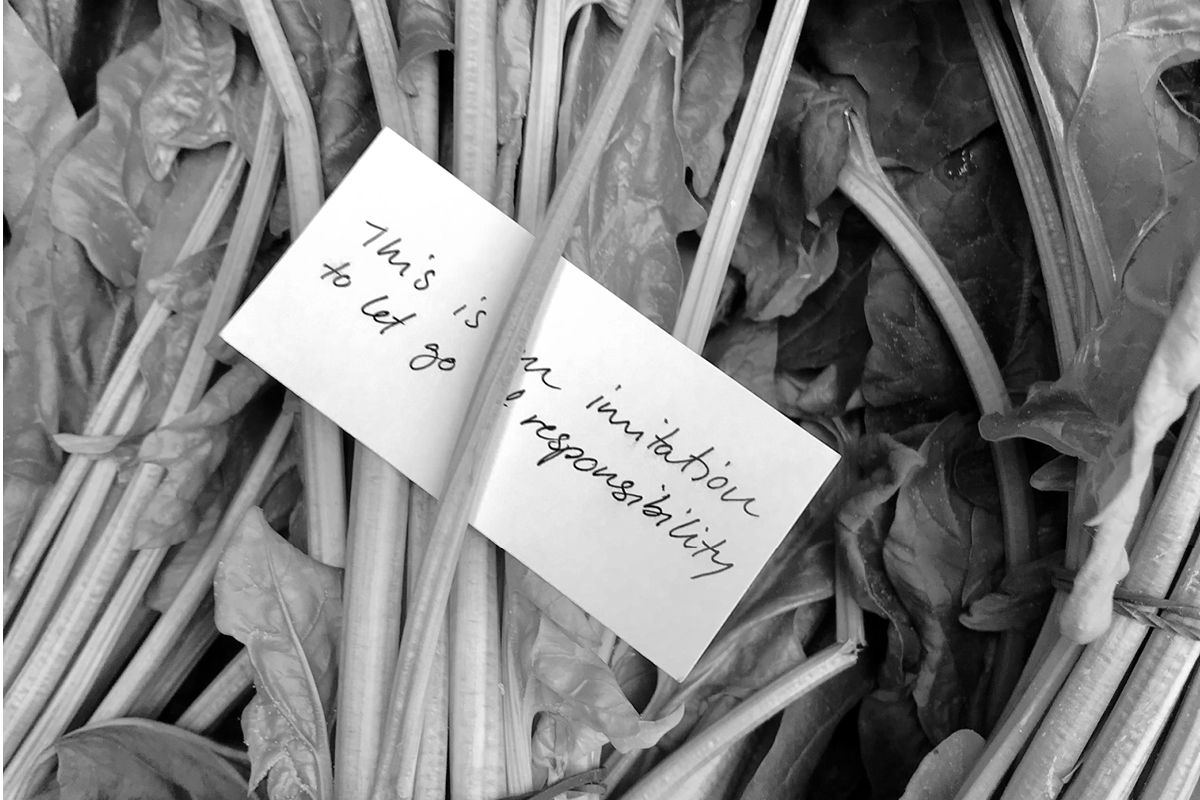
during all four weeks of testing ground. The invitations have been used as guidance for the audience, to facilitate conversations, as interventions, as a tool in the process of exploring different themes etc.
Some invitations exist in the city, at Christiansborg, orally between two people or in a body, the nature. Here are four examples that have been written down. You can find more invitations on our website.
Invitation
What if we stayed with the not-yetness?
How would you feel? Breathe? Lay down and walk on?
Would we still be together? Or would we become alone? Someone new?
If you were invited to go to the place of the not-yetness, where would you go?
Would you come back?
Have you already moved on?
Please bring two long pauses and a lot of soft friction.
See you soon, again.
An Invitation to Linger
This is an invitation to linger. To stay with. To start and to start again. This is an invitation to hold. To discover. Unravel. To speculate, to seed, to doubt, to consider, to question. To listen. To sense. To start.
An invitation to a new perspective on your spatial listening
In what ways does it affect your being – your spatial presence and capability to listen – if you engage with a space, a situation, with a certain perspective?
Choose one perspective and stay with it during your experience of a new place:
Among-ness
Around-ness
Back-ness
Before-ness
Beside-ness
In-Between-ness
Outward-ness
How does it affect your experience?
Invitation to be with your body
Invite yourself to breathe and simply be with your body.
If possible, do it together with someone, or find a safe space for yourself.
Engage with the consequences of your breathing and being a body.
Allow the vibrations, pains, reliefs, imaginations etc. to manifest themself – if need be, only shortly.
If possible, give yourself time and care to stay with your breathing, with your body.
Listen to it.
– attempt to breath to the very edge of your being.
– breathe until your orientation is shifting.
Fragment 5: Afterthoughts
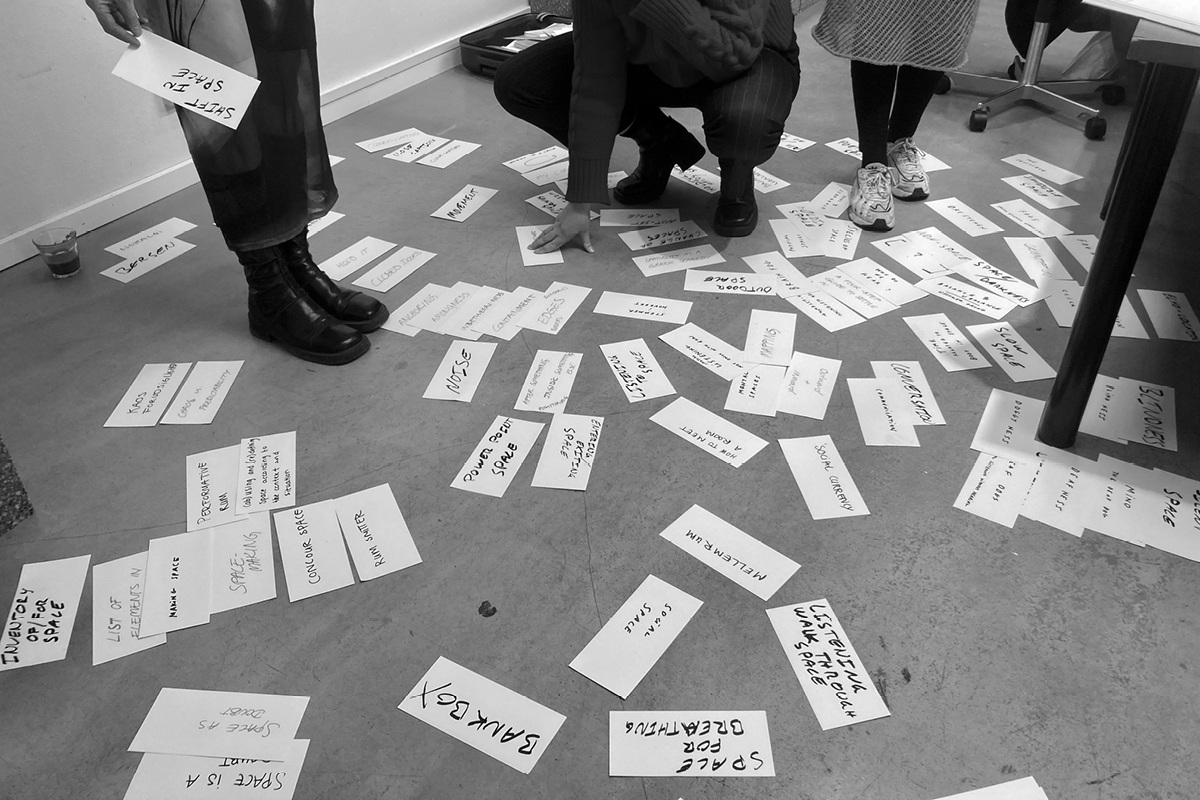
We have asked our invited guests to share an afterthought, as a way to contemplate and document how the Testing Ground has affected our collaborators over time – a chance to keep a space for emerging thoughts and feelings.
Brandon Labelle, for week I: Listening as a Framework
- Listening seems like a device, a poetic weapon, that can contribute to reactivating feelings of interdependency. … I hope we can do more together soon!
Barbora Kováčová, for week 3: The Listening Body
- Places that resound are like a settlement of bodies – changing little here and there, but persisting in time by their stubbornness, keeping the archive of everyone’s memories in resonating silence.
Jenny Gräf Sheppard, for week I: Listening as a Framework
- How to speak of something so tenuous and changing as listening, sounding, while also becoming aware of our own listening positionality?
Nana Francisca Schottländer, for week 3: The Listening Body
- Do not underestimate the deeply transformative potential of an intimate encounter with a cigarette bud, a cobblestone, a crack in the paint and the resonances from this, traveling on through the individual and collective flesh of the world.
Louise Vind Nielsen, for week IV: Spatial Listening
- Even deaf dogs are floating around in this seemingly endless mosh pit of sound waves picking up the tactile vibrations that life on earth produces, orienting themselves through other senses than that of hearing.
Elisabeth Holager Lund, for week IV: Spatial Listening
- To find / peace and calmness / in introversy / in the company of others / is radical / takes courage / needs training. / To not respond. / To not fill in the blanks. / To not entertain.
Carolyn F. Strauss, for week II: Slow Listening
- coming soon…
Christine Hvidt, for week II: Slow Listening
- Letting yourself fully immerse into becoming all ear to matter and pattern, there will be no space for signifier or signified.
You may read the full afterthought texts here.
